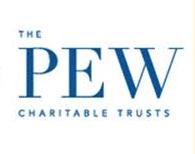
The Pew Charitable Trust just posted its analysis of the antibacterial pipeline, providing two separate analyses, one for antibiotics and the other for non-traditional therapies.
I will ignore entirely whether the pipeline products were considered to be innovative or not since I am focused solely on their potential clinical utility.
Of 43 antibiotics in development, 17 are phase 2 and beyond. Of those, only five target resistant Gram-negative pathogens. One compound in phase 3 is solithromycin, an old and controversial ketolide antibiotic being investigated for treatment of gonorrhea. Another more innovative compound in phase 3 for the treatment of gonorrhea is zoliflodacin. (I was on the advisory board for GARDP, a co-developer of the compound). Of the six antibiotics in phase 2 development, five target C. difficile.
For those antibiotics that target resistant Gram-negative pathogens, what will their ultimate market look like? Some have already suggested there is really only room for one such compound given the number of patients available for treatment. I can’t help but wonder what the investors in these companies and independent market analysts think about their chances of commercial success. Or is everyone betting on a significant pull incentive for their product?
The same comment might apply for all those phase 2 compounds targeting C. difficile. Here the market probably revolves around efficacy in preventing recurrence following initial therapy. But how many products can this market support and at what price? Again, I am curious to understand the thinking of these companies, their investors, and market analysts.
The non-traditional therapies include 19 products in phase 2 or beyond. One is an interesting immunomodulator from AtoxBio for the treatment of sepsis and organ failure in patients suffering from necrotizing fasciitis. The company has filed an NDA based on somewhat mixed data. To me, this is potentially the most interesting, novel, and more importantly, useful of the late-stage non-traditional pipeline products. (I used to consult for them). Two compounds are lysins targeting S. aureus infections. Two are orally non-absorbable antibiotic inactivators to prevent C. diff or other resistant infections. A number of antibodies targeting bacterial virulence or toxins are on the list. Five compounds modulate the microbiome – but to what end? Of the 19 non-traditional products in late-stage development five target resistant Gram-negative infections.
For the non-traditional therapies, we come down to two related issues. (See my previous blog on this here). One revolves around clinical considerations in terms of how these products will be used by physicians to treat infected patients and whether the products offer clear clinical advantages. This also becomes a regulatory question. Can these products be used as stand-alone therapy? If not, will sponsors need to provide superior data? Then there is the issue of whether non-traditional therapy offers clear advantages over other products with similar targets already marketed at a low price. This seems especially important in the case of products targeting C. diff and those targeting Gram-negative infections as noted above.
While I have my own thoughts and biases regarding particular products in the antibacterial pipeline, I want to simply consider here whether this pipeline, given normal attrition rates, is adequate to our needs. If our unmet needs include, most importantly, resistant Pseudomonas and Acinetobacter infections, the answer is a resounding NO! There are only two late-stage antibiotics in the pipeline addressing these infections! Among late-stage non-traditional products, there are virulence inhibitors targeting Pseudomonas and bacteriophage capable of targeting these pathogens. But the use of such virulence inhibitors in clinical practice, for me, remains somewhat opaque. Bacteriophage therapy seems promising, but so far seems limited to an almost case-by-case custom therapy approach similar to some cancer therapies. So, again, this pipeline, to address Paseudomonas and Acinetobacter, is NOT adequate. But then, neither is the market available to support such products without a significant pull incentive.
Am I starting to sound like a broken record? (You remember vinyl, right?)



